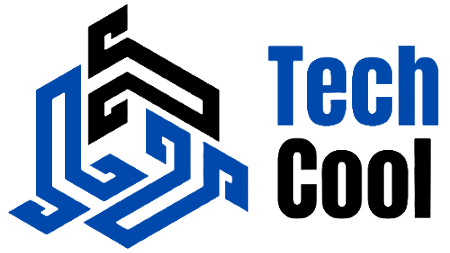Tablets have become ubiquitous devices that bridge the gap between smartphones and laptops, offering users a versatile platform for productivity, entertainment, and communication. In this comprehensive guide, we delve into the latest trends shaping the tablet market, including innovations, consumer preferences, and the competitive landscape.
1. Introduction to Tablet Market Trends
The tablet market is continually evolving, driven by technological advancements, changing consumer preferences, and competitive dynamics. Understanding the latest trends in the tablet market is essential for manufacturers, retailers, and consumers alike to stay informed and make informed decisions.
2. Rising Demand for Hybrid Devices
One notable trend in the tablet market is the growing demand for hybrid devices that combine the functionality of tablets with the productivity of laptops. Convertible tablets, also known as 2-in-1 or detachable tablets, feature detachable keyboards or convertible hinges that allow them to be used in tablet or laptop mode. These hybrid devices appeal to users who seek the versatility of a tablet for entertainment and touchscreen interaction, combined with the productivity of a laptop for typing and multitasking.
3. Focus on Productivity and Creativity
As tablets continue to blur the lines between consumption and creation devices, manufacturers are placing a greater emphasis on productivity and creativity features. High-performance tablets with powerful processors, ample RAM, and versatile stylus support cater to professionals, artists, and students who require robust tools for content creation, note-taking, and graphic design. Software optimizations and productivity suites tailored for tablets further enhance the user experience, enabling seamless transitions between tasks and workflows.
4. Larger Displays and Entertainment Features
Another trend driving the tablet market is the demand for larger displays and immersive entertainment features. Tablets with larger screen sizes offer a more engaging viewing experience for multimedia content such as movies, games, and e-books. High-resolution displays, HDR support, and advanced audio technologies enhance the immersion factor, making tablets an attractive option for entertainment consumption on the go. Additionally, features such as multi-speaker setups, Dolby Atmos support, and adaptive refresh rates further elevate the entertainment experience on tablets.
5. Expansion of 5G Connectivity
With the rollout of 5G networks worldwide, tablets with 5G connectivity are gaining traction in the market. 5G-enabled tablets offer faster download and upload speeds, lower latency, and improved network reliability compared to their 4G counterparts. These devices appeal to users who require seamless connectivity for video streaming, online gaming, cloud computing, and remote collaboration. Manufacturers are increasingly offering 5G variants of their flagship tablets to cater to the growing demand for high-speed mobile connectivity.
6. Emphasis on Portability and Battery Life
Portability and battery life remain critical factors driving consumer purchasing decisions in the tablet market. Slim and lightweight designs make tablets convenient to carry around for work, travel, or leisure activities. Extended battery life ensures uninterrupted usage throughout the day, allowing users to stay productive or entertained without constantly worrying about recharging. Manufacturers are leveraging advancements in battery technology and power-efficient components to deliver tablets with longer battery life and faster charging capabilities.
7. Sustainability and Eco-Friendly Initiatives
In response to growing environmental concerns, many tablet manufacturers are embracing sustainability and eco-friendly initiatives in their product designs and manufacturing processes. This includes using recycled materials, reducing carbon emissions, and implementing energy-efficient technologies to minimize environmental impact. Consumers are increasingly conscious of the environmental footprint of their electronic devices and are more likely to choose products from companies that prioritize sustainability and social responsibility.
8. Adoption of Foldable and Dual-Screen Designs
Foldable and dual-screen tablets represent a niche segment of the market that is gaining momentum with technological advancements and design innovations. These devices feature flexible or hinge-based displays that allow them to fold or unfold into different form factors, offering users enhanced flexibility and multitasking capabilities. Foldable tablets appeal to users who value portability and versatility, enabling them to switch between single-screen and dual-screen modes for different tasks and scenarios.
9. Educational and Remote Learning Solutions
The global shift towards remote learning and digital education has fueled demand for tablets as educational tools for students of all ages. Educational tablets come preloaded with learning apps, e-books, and interactive content tailored for curriculum-based learning. Schools, colleges, and educational institutions are increasingly adopting tablets as part of their digital learning initiatives, providing students with access to educational resources and collaborative tools for remote learning, homework assignments, and virtual classrooms.
10. Competitive Landscape and Market Dynamics
The tablet market is characterized by intense competition among leading manufacturers such as Apple, Samsung, Microsoft, Lenovo, and Huawei, among others. These companies vie for market share by introducing innovative features, aggressive pricing strategies, and marketing campaigns targeted at specific user segments. Emerging players from regions such as China and India are also gaining prominence in the global tablet market, offering affordable devices with competitive specifications and value-added services.
FAQs (Frequently Asked Questions)
Q: What are some key factors to consider when purchasing a tablet?
A: Some key factors to consider when purchasing a tablet include screen size, performance specifications (processor, RAM, storage), operating system (iOS, Android, Windows), battery life, connectivity options, and price.
Q: Can tablets replace laptops for productivity tasks?
A: While tablets offer versatility and portability for a wide range of tasks, including productivity and creativity, they may not fully replace laptops for users who require specific software applications, extensive multitasking, or traditional keyboard input. However, hybrid devices and convertible tablets offer a compromise between tablet and laptop functionality, catering to users’ diverse needs.
Q: How do I choose between Wi-Fi-only and cellular-enabled tablets?
A: The choice between Wi-Fi-only and cellular-enabled tablets depends on your usage requirements and preferences. Wi-Fi-only tablets are suitable for users who primarily use their devices in locations with Wi-Fi coverage, such as homes, offices, or public hotspots. Cellular-enabled tablets, on the other hand, provide the flexibility of mobile connectivity, allowing users to stay connected on the go without relying on Wi-Fi networks.
Conclusion
The tablet market continues to evolve with the introduction of innovative features, advancements in technology, and changing consumer preferences. From hybrid devices and entertainment-centric features to sustainability initiatives and educational solutions, tablets offer a versatile platform for productivity, creativity, and entertainment. As manufacturers strive to meet the diverse needs of consumers, the tablet market is poised for further growth and innovation in the years to come. By staying informed about the latest trends and developments in the tablet market, consumers can make informed decisions and choose devices that best suit their lifestyle and requirements.


